 W
WThe "Anthon Transcript" is a piece of paper on which Joseph Smith wrote several lines of characters. According to Smith, these characters were from the golden plates and represent the reformed Egyptian writing that was on the plates.
 W
WDhikr, also spelled Zikr, Thikr, Zekr, or Zikar, literally means "remembrance, reminder" or "mention, utterance". They are Islamic devotional acts, in which phrases or prayers are repeated. It can be counted on a set of prayer beads or through the fingers of the hand. It plays a central role in Sufi Islam. A person who recites the Dhikr is called a ḏākir . Tasbih (تَسْبِيح), literally meaning "glorification" is a form of dhikr that involves the repetitive utterances of short sentences glorifying God. Dhikr is used in tasbih. The content of the prayers includes the names of God, or a dua taken from the hadiths or the Quran. The word Dhikr is also the origin of the name Dhakir (ذَاكِرْ) literally means "mentioner". According to the Islamic belief, all living or non-living creatures, animals and others, mentioning the name of Allah.
 W
WDivine language, the language of the gods, or, in monotheism, the language of God is the concept of a mystical or divine proto-language, which predates and supersedes human speech.
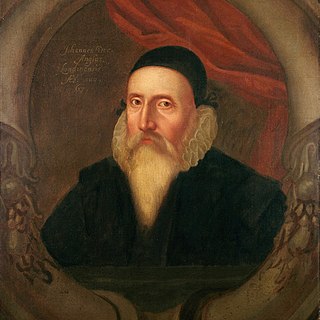 W
WEnochian is an occult language, claimed to be angelic, recorded in the private journals of John Dee and his colleague Edward Kelley in late 16th-century England. Kelley was a spirit medium who worked with Dee in his magical investigations. The men claimed that the language was revealed to them by the Enochian angels. The language is integral to the practice of Enochian magic. The syntax and grammar of the Enochian language are highly similar to the English language.
 W
WThe Hizb Rateb is a collective recitation of Quran or dhikr or dua or wird done by murids and saliks in islamic sufism.
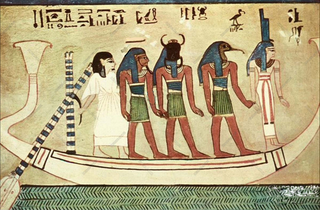 W
WHu, in ancient Egypt, was the deification of the first word, the word of creation, that Atum was said to have exclaimed upon ejaculating or, alternatively, his circumcision, in his masturbatory act of creating the Ennead.
 W
WJapa is the meditative repetition of a mantra or a divine name. It is a practice found in Hinduism, Jainism, Sikhism, Buddhism, and Shintōism.
 W
WThe Jesus Prayer, also known as The Prayer, is a short formulaic prayer esteemed and advocated especially within the Eastern churches: "Lord Jesus Christ, Son of God, have mercy on me, a sinner." The prayer has been widely taught and discussed throughout the history of the Orthodox Church. The ancient and original form did not include the words "a sinner", which were added later. It is often repeated continually as a part of personal ascetic practice, its use being an integral part of the eremitic tradition of prayer known as hesychasm. The prayer is particularly esteemed by the spiritual fathers of this tradition as a method of cleaning and opening up the mind and after this the heart (kardia) and bringing about firstly the Prayer of the Mind or more correctly the Noetic Prayer and after this the Prayer of the Heart. The Prayer of the Heart is considered to be the Unceasing Prayer that the Apostle Paul advocates in the New Testament. Theophan the Recluse regarded the Jesus Prayer stronger than all other prayers by virtue of the power of the Holy Name of Jesus.
 W
WJindai moji or Kamiyo moji are characters said to have been used in ancient Japan. Some have claimed since the mid-Edo period that such ancient characters, for example such as Chikushi characters and Hokkaido characters, have been found in archeological remains, in Kofun and on mountains, but all jindai moji are generally considered to be forgeries. No earthenware with such characters has ever been found.
 W
WKtav Ashuri is the modern-day Hebrew language name given for the Hebrew alphabet now in use by Israel, used by them to write both the Hebrew language and Jewish Babylonian Aramaic.
 W
WIn Abrahamic and European mythology, medieval literature and occultism, the language of the birds is postulated as a mystical, perfect divine language, Adamic language, Enochian, angelic language or a mythical or magical language used by birds to communicate with the initiated.
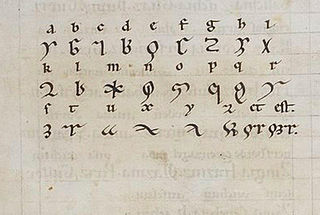 W
WA Lingua ignota was described by the 12th century abbess of Rupertsberg, St. Hildegard of Bingen, OSB, who apparently used it for mystical purposes. To write it, she used an alphabet of 23 letters denominated litterae ignotae.
 W
WLogos is a term in Western philosophy, psychology, rhetoric, and religion derived from a Greek word variously meaning "ground", "plea", "opinion", "expectation", "word", "speech", "account", "reason", "proportion", and "discourse". It became a technical term in Western philosophy beginning with Heraclitus, who used the term for a principle of order and knowledge.
 W
WMaranatha is an Aramaic phrase. It occurs once in the New Testament. It also appears in Didache 10:14, which is part of the Apostolic Fathers' collection. It is transliterated into Greek letters rather than translated and, given the nature of early manuscripts, the lexical difficulty rests in determining just which two Aramaic words constitute the single Greek expression, found at the end of Paul's First Epistle to the Corinthians (16:22).
 W
WIn Islam, God is believed to have 99 names in the Quran, known as the 99 Names of God.
 W
WNianfo is a term commonly seen in Pure Land Buddhism. In the context of Pure Land practice, it generally refers to the repetition of the name of Amitābha. It is a translation of Sanskrit buddhānusmṛti.
 W
WNorito (祝詞) are liturgical texts or ritual incantations in Shinto, usually addressed to a given kami.
 W
WDevaneya Pavanar was a prominent Tamil scholar who wrote over 35 research volumes. Additionally, he was a staunch proponent of the "Pure Tamil movement" and initiated the Etymological Dictionary Project primarily to bring out the roots of Tamil words and their connections and ramifications with Nostratic studies.
 W
WThe Book of Mormon, a work of scripture of the Latter Day Saint movement, describes itself as having a portion originally written in reformed Egyptian characters on plates of metal or "ore" by prophets living in the Western Hemisphere from perhaps as early as the 6th century BC until as late as the 5th century AD. Joseph Smith, the movement's founder, published the Book of Mormon in 1830 as a translation of these golden plates. Smith said that after he finished the translation, he returned the golden plates to the angel Moroni.
 W
WSefer Yetzirah is the title of the earliest extant book on Jewish mysticism, although some early commentators treated it as a treatise on mathematical and linguistic theory as opposed to Kabbalah. Yetzirah is more literally translated as "Formation"; the word Briah is used for "Creation". The book is traditionally ascribed to the patriarch Abraham, although others attribute its writing to Rabbi Akiva. Modern scholars have not reached consensus on the question of its origins. According to Rabbi Saadia Gaon, the objective of the book's author was to convey in writing how the things of our universe came into existence.
 W
WSpeaking in tongues, also known as glossolalia, is a practice in which people utter words or speech-like sounds, often thought by believers to be languages unknown to the speaker. One definition used by linguists is the fluid vocalizing of speech-like syllables that lack any readily comprehended meaning, in some cases as part of religious practice in which some believe it to be a divine language unknown to the speaker. Glossolalia is practiced in Pentecostal and charismatic Christianity, as well as in other religions.
 W
WIn Eastern Slavic mythology, zagоvory is a form of verbal folk magic. Users of zagоvory can enchant objects or people.
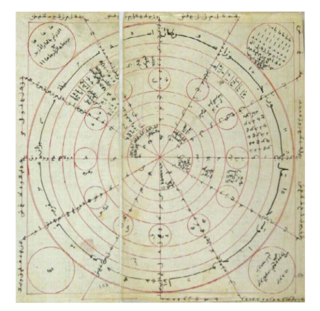 W
WA zairja was a device used by medieval Arab astrologers to generate ideas by mechanical means. The name may derive from a mixture of the Persian words zaicha and daira ("circle").
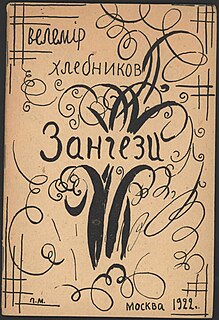 W
WZangezi, or Zangezi: A Supersaga in 20 Planes, is a futurist poem-play by Russian, later Soviet, poet, writer and scholar Velimir Khlebnikov.
 W
WZaum are the linguistic experiments in sound symbolism and language creation of Russian Futurist poets such as Velimir Khlebnikov and Aleksei Kruchenykh. Zaum is a non-referential phonetic entity with its own ontology. The language consists of neologisms that mean nothing. Zaum is a language organized through phonetic analogy and rhythm. Zaum literature cannot contain any onomatopoeia or psychopathological states.